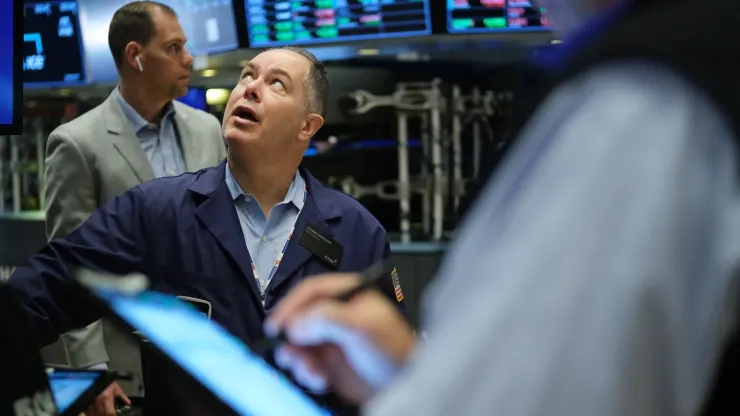
Stock futures remained flat early Thursday morning as investors looked beyond the hawkishness of the Federal Reserve’s meeting minutes released in the afternoon toward labor data coming later this week.
Futures tied to the Dow Jones Industrial Average lost 34 points, trading down around 0.1%. S&P 500 and Nasdaq 100 futures both also traded down 0.1% and 0.18%.
The moves follow a choppy trading session. Markets had been down early in the day on the back of a mixed bag of economic data, but stock rose into the closing bell. The Dow ended the day up 133 points, or 0.4%, while the S&P 500 and Nasdaq added 0.8% and 0.7%, respectively.
November’s Job Openings and Labor Turnover, or JOLTS, report showed the job market remained strong, bolstering concerns that the Fed could continue raising interest rates as long as there remained a hot market for workers. But the ISM manufacturing index showed the sector was contracting after 30 months of expansion, which investors saw as a positive indicator that previous rate hikes had the intended impact of cooling the economy.
Stocks were mainly trading up in the afternoon. But gave up some of their gains following the release of minutes from the Fed’s December meeting, which showed the central bank remained committed to higher interest rates for “some time.”
Investors have “wounds that are still fresh” following 2022, which brought the worst year for the stock market since 2008, said Keith Buchanan, a portfolio manager at GLOBALT Investments. He said investors are attempting to balance what each new piece of economic data or Fed commentary can indicate with broader concerns about the future.
“Every day that goes by and we get a data point that’s moving in the right direction, it’s positive,” Buchanan said. “But it’s also quickly followed up with apprehension on how sensitive and delicate this moment is.”
Investors will watch Thursday for more data on jobs, the trade deficit and business activity. Fed speakers Raphael Bostic and James Bullard are also both slated to speak.
On Friday, investors will review data on nonfarm payrolls, the unemployment rate and hourly wages. Since the report could have a big impact on the Fed’s next moves, it has the potential to impact the market. Investors don’t want to see big gains in wage growth.




























